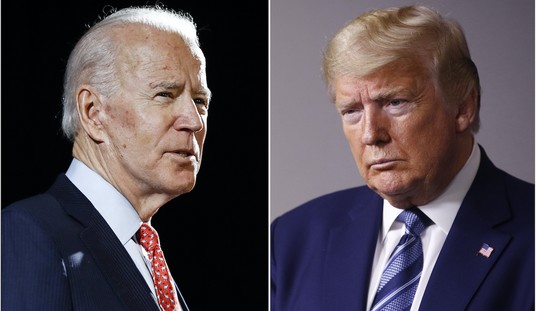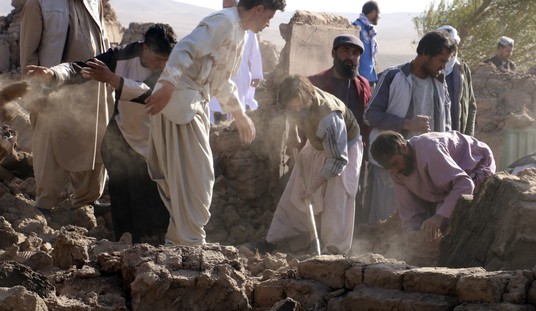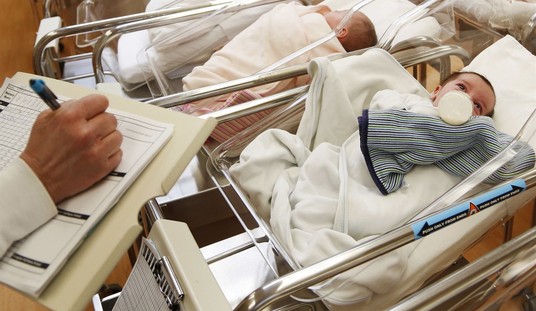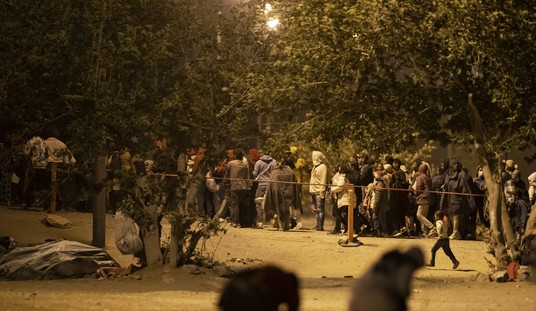Earlier this week President Trump was asked why the death toll from the coronavirus in the United States is so high relative to our percentage of the world population. Trump responded by casting doubt on the official numbers released by some other countries. “Does anybody really believe the numbers of some of these countries?” he said. It’s not the first time he has suggested China’s death toll is “a little bit on the light side.” Today, China revised the death toll in Wuhan upward by 50 percent.
Officials in Wuhan, where the virus was first reported late last year, on Friday added 1,290 coronavirus deaths to the city’s toll. They also added 325 confirmed cases to the city tally.
The total number of cases recorded in the city now stands at 50,333, with 3,869 deaths. The previous reported death toll for Wuhan was 2,579 — so the revised figure marks a 50% increase in the number of deaths in the city from coronavirus.
The updated figures came in a press release which offered a lengthy explanation for why the numbers were off by this much in the first place:
The data discrepancies are due to the following reasons: First, a surging number of patients at the early stage of the epidemic overwhelmed medical resources and the admission capacity of medical institutions. Some patients died at home without having been treated in hospitals. Second, during the height of their treating efforts, hospitals were operating beyond their capacities and medical staff were preoccupied with saving and treating patients, resulting in belated, missed and mistaken reporting. Third, due to a rapid increase of designated hospitals for treating COVID-19 patients, including those administered by ministries, Hubei Province, Wuhan city and its districts, those affiliated to companies, as well as private hospitals and makeshift hospitals, a few medical institutions were not linked to the epidemic information network and failed to report their data in time. Fourth, the registered information of some of the deceased patients was incomplete, and there were repetitions and mistakes in the reporting.
None of these problems can possibly be new to the government. More than two weeks ago there were reports that deaths outside of hospitals were being under-counted in places like Italy. Why did it take until mid-April to get around to correcting these problems? Probably because China is reacting to a growing global consensus that they have not been very honest about their numbers:
“They are on the defensive, clearly,” said Jean-Pierre Cabestan, a political science professor at Hong Kong Baptist University and an expert on Chinese politics. “It’s an uphill battle now for China to improve its image.”
In an interview Friday with the official Xinhua news agency, an unidentified official from Wuhan’s epidemic command center said that revising the figures was important for protecting the “credibility of the government” and “maintaining respect for each individual life.”
Meanwhile, the new revisions may still be below the actual numbers which some recent estimates have suggested are much higher.
Experts say the revisions are not unusual. Many countries are probably underreporting their official tallies of infections and deaths, in part because of problems with testing and the speed with which the virus has overwhelmed public health care systems.
Still, the changes to the official figures are small enough that they are unlikely to quash lingering doubts about their veracity. Researchers at the University of Hong Kong recently estimated there were probably around 232,000 confirmed cases in China by late February, more than four times the number of reported cases at the time. As of Friday, China had reported more than 82,000 officially confirmed cases and over 4,500 deaths from the coronavirus, including the revised tallies in Wuhan….
The C.I.A. has also told the White House that China’s official figures are vastly understated, though it does not know the exact numbers, current and former American intelligence officials say.
That University of Hong Kong study is worth a look. It’s based upon the changing case definitions of the virus that were used by China in the early days:
From January through to early March 2020, seven versions of the case definition for COVID-19 were issued by the National Health Commission in China. As of February 20, there were 55,508 confirmed cases reported in mainland China. We estimated that when the case definitions were changed from version 1 to 2, version 2 to 4 and version 4 to 5, the proportion of infections being detected as cases were increased by 7.1-fold (95% credible interval (CI): 4.8, 10.9), 2.8-fold (95% CI: 1.9, 4.2) and 4.2-fold (95% CI: 2.6, 7.3) respectively. If the fifth version of the case definition had been applied throughout the outbreak, we estimated that by February 20 there would have been 232,000 (95% CI: 161,000, 359,000) confirmed cases.
The study goes on to explain that the fifth version of the case definition allowed for diagnoses based on radiological evidence, i.e. by looking at scans of patient’s lungs. But that definition was quickly retracted:
The introduction of “clinically confirmed” cases in the fifth edition of the case definitions allowed a large number of highly suspected cases who could not receive a virologic test to be isolated and treated in time and reallocation of laboratory testing resources to be used for identifying and then isolating cases in the community as part of the containment efforts. This category was removed within a week, in the sixth edition of case definitions (Table 1) as explained by health officials that laboratory testing was sufficient to confirm all cases and the “clinically confirmed” category was unnecessary [13]. However confirmation of viral pneumonia with radiological evidence could be an important alternative for diagnosis and surveillance of COVID-19 in locations with limited laboratory testing capacity, and would also be a good option if or when a surge in COVID-19 consultations exceeds local laboratory capacity.
So it sounds as if China’s numbers could still be off quite significantly based upon how they limited the definition of cases to those who had received a test.








Join the conversation as a VIP Member